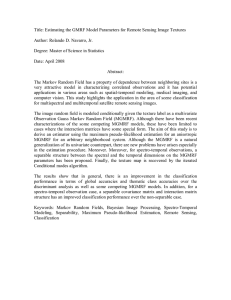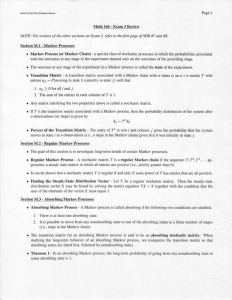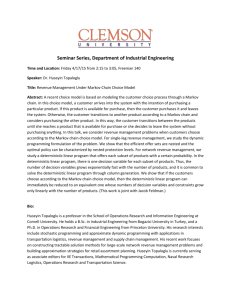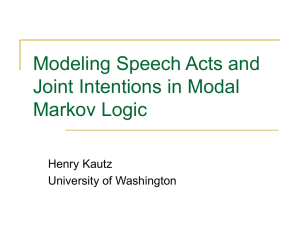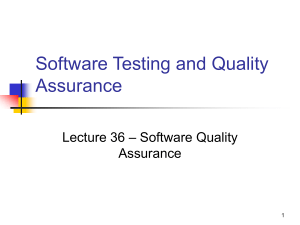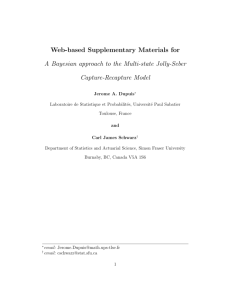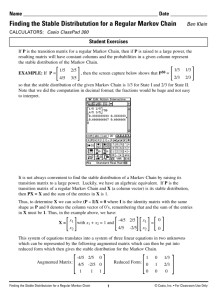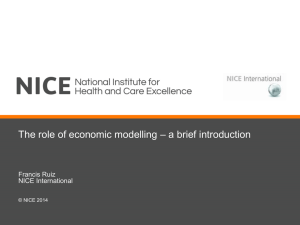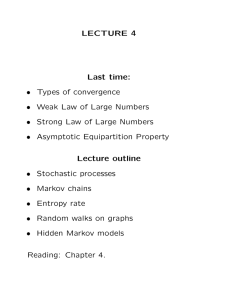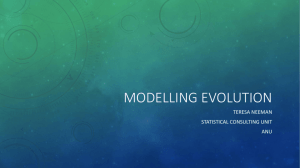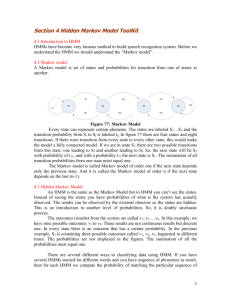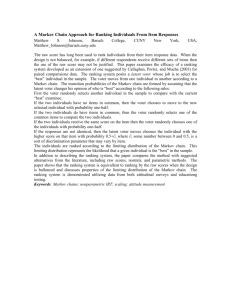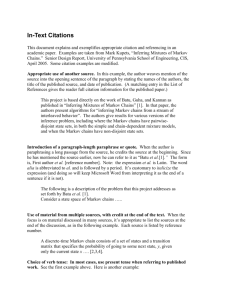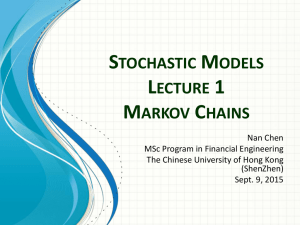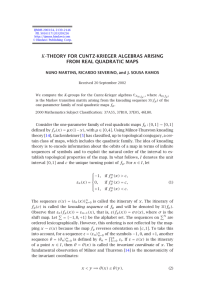topics
advertisement
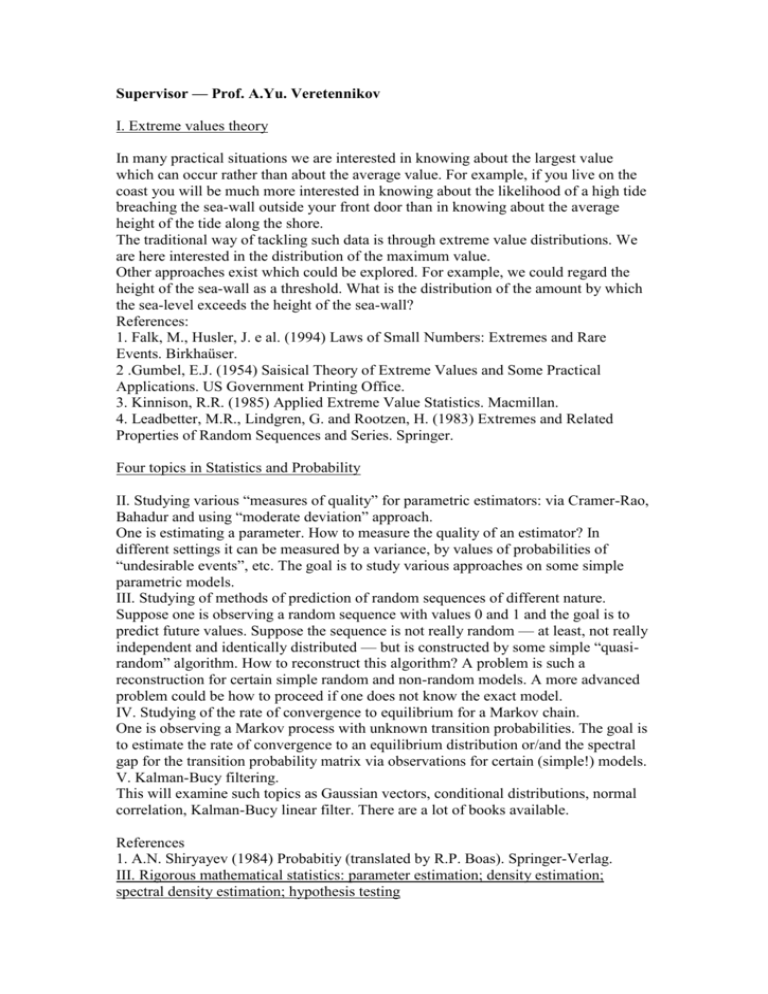
Supervisor — Prof. A.Yu. Veretennikov I. Extreme values theory In many practical situations we are interested in knowing about the largest value which can occur rather than about the average value. For example, if you live on the coast you will be much more interested in knowing about the likelihood of a high tide breaching the sea-wall outside your front door than in knowing about the average height of the tide along the shore. The traditional way of tackling such data is through extreme value distributions. We are here interested in the distribution of the maximum value. Other approaches exist which could be explored. For example, we could regard the height of the sea-wall as a threshold. What is the distribution of the amount by which the sea-level exceeds the height of the sea-wall? References: 1. Falk, M., Husler, J. e al. (1994) Laws of Small Numbers: Extremes and Rare Events. Birkhaüser. 2 .Gumbel, E.J. (1954) Saisical Theory of Extreme Values and Some Practical Applications. US Government Printing Office. 3. Kinnison, R.R. (1985) Applied Extreme Value Statistics. Macmillan. 4. Leadbetter, M.R., Lindgren, G. and Rootzen, H. (1983) Extremes and Related Properties of Random Sequences and Series. Springer. Four topics in Statistics and Probability II. Studying various “measures of quality” for parametric estimators: via Cramer-Rao, Bahadur and using “moderate deviation” approach. One is estimating a parameter. How to measure the quality of an estimator? In different settings it can be measured by a variance, by values of probabilities of “undesirable events”, etc. The goal is to study various approaches on some simple parametric models. III. Studying of methods of prediction of random sequences of different nature. Suppose one is observing a random sequence with values 0 and 1 and the goal is to predict future values. Suppose the sequence is not really random — at least, not really independent and identically distributed — but is constructed by some simple “quasirandom” algorithm. How to reconstruct this algorithm? A problem is such a reconstruction for certain simple random and non-random models. A more advanced problem could be how to proceed if one does not know the exact model. IV. Studying of the rate of convergence to equilibrium for a Markov chain. One is observing a Markov process with unknown transition probabilities. The goal is to estimate the rate of convergence to an equilibrium distribution or/and the spectral gap for the transition probability matrix via observations for certain (simple!) models. V. Kalman-Bucy filtering. This will examine such topics as Gaussian vectors, conditional distributions, normal correlation, Kalman-Bucy linear filter. There are a lot of books available. References 1. A.N. Shiryayev (1984) Probabitiy (translated by R.P. Boas). Springer-Verlag. III. Rigorous mathematical statistics: parameter estimation; density estimation; spectral density estimation; hypothesis testing Several different topics are combined by one idea: to give a rigorous mathematical presentation of the subject. While applying statistical methods, it is useful (if not indispensable!) to realize constraints and requirements (assumptions) of methods involved. One way to do it is to use rigorous probability theory. References: 1. Le Cam, L. and Yang, G.L. (2000) Asympiotics in Statistics: Some Basic Concepts. Springer. 2. Borovkov, A.A. (1998) Mahemaical SLaiistics. Gordon and Breach. 3. Ibragimov, I.A. and Khasminskii, R.Z. (1981) Statistical Estimation — Asymptotic Theory. Springer. 4. Bahadur, R.R. (1971) Some Limit Theorems in Statistics. SIAM. 5. Zurbenko, I.G. (1986) The Spectral Analysis of Time Series. North-Holland. Further topics (with references and abstracts available upon request) VI. Markov chains as discretization methods for solving partial differential equations VII. Markov chain stability and applications to MCMC (Markov Chain Monte Carlo) VIII. Some methods of tracking a signal under a random noise IX. What are Lyapunov exponents in stochastic systems X. Linear algebra methods for analysing ergodicity of Markov chains

